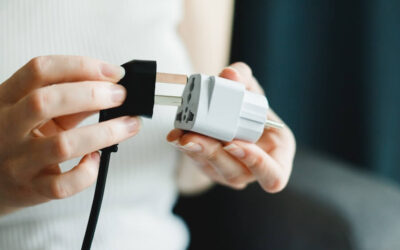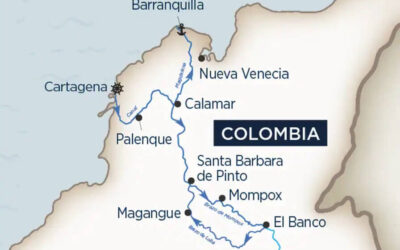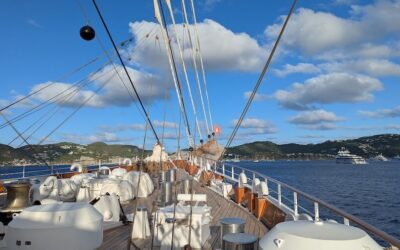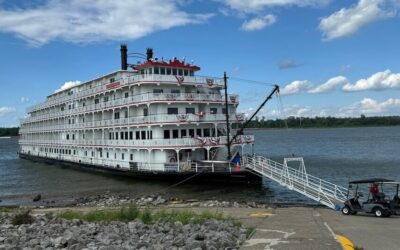The Evolution of Maritime Vocabulary
by Theodore W. Scull
The primary excuse for penning this essay came out of an article some years ago in Lloyd’s List, the venerable British shipping publication, with its announcement that from heretofore a ship would be considered a neutral “it” and no longer in the feminine as “she.”
That abrupt change of terminology has been argued at length in the press, shipboard smoking rooms, and at the family dinner table, and gradually one hears both references, with small ships and large.
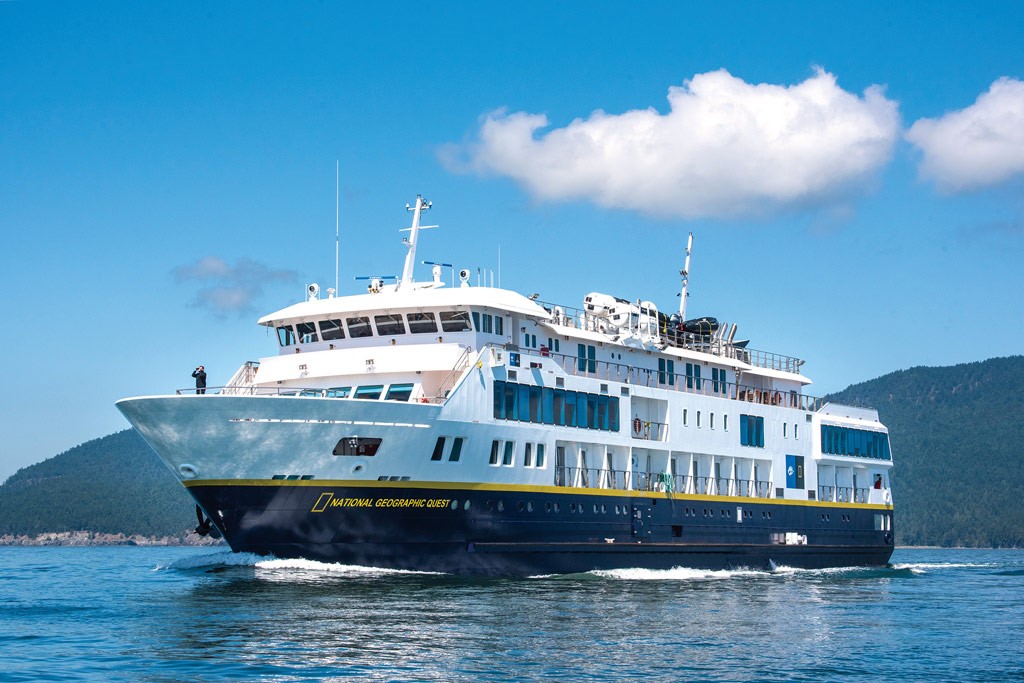
National Geographic Quest * Photo by Lindblad Expeditions
Le/La Ships
Masculine, feminine and now a neuter word — Le =masculine; La = feminine
Across the Western Ocean, now commonly referred to as “the pond” by folks who have obviously never crossed the Atlantic by sea in December, the lovable French have always considered a ship a “he” — le bateau, le navire, le paquebot.
Their beautiful country is La (Belle) France, and the last French Line ship was Le France. The reason for this may be as obscure as why Americans drive on the right side of the road, and our English-speaking forbearers hug the left.
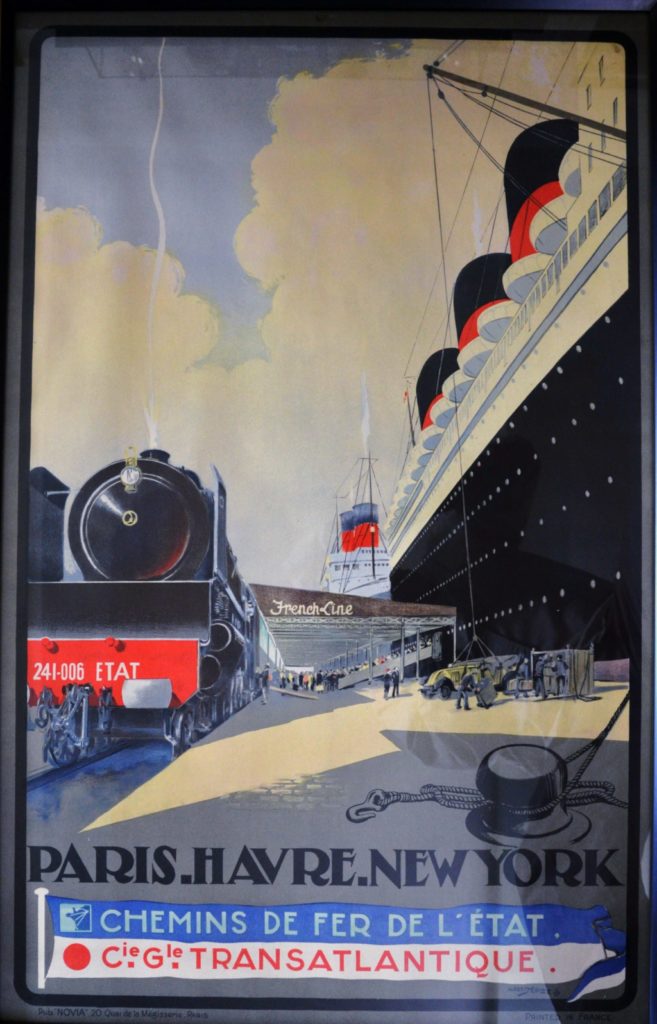
The French ships lined up here use the masculine “le” rather than “la” when they ID a ship. * Poster art by Albert Sebile; Ted Scull Collection
But the topic of ships as masculine, feminine or neuter is just the tip of the iceberg compared to the present-day cruise industry’s rampant desire to freeze out old maritime vocabulary and traditions while the company executives cruise-speak about synergies and growing the company.
Hotel Terms Predominate in Maritime Vocabulary
One of the first shipboard positions to go under or be greatly diminished in power is the purser. Another is the chief steward, also virtually a dodo word (referring to the extinct dodo bird) — dropped like a lead line over the side in favor of hotel manager, now applying to “his or her hotel” that also may roll and pitch.
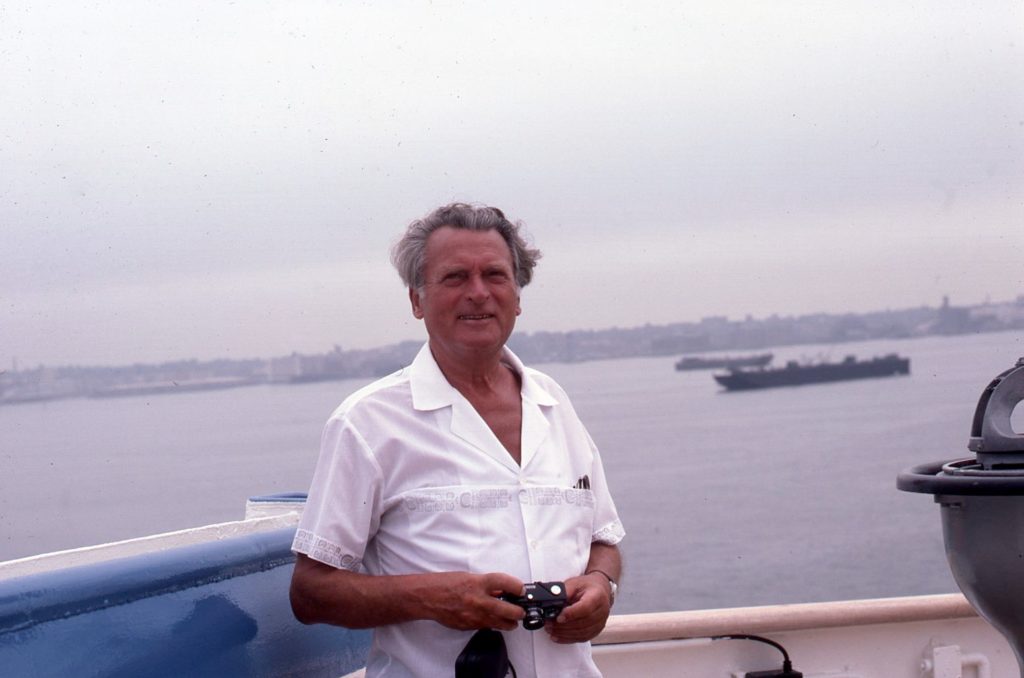
The retired purser of the Stockholm, the Swedish ship that collided with the Andrea Doria off Nantucket.
The chief purser was once second only to The Old Man, also known as the captain, the four-striped fellow who drives the boat or is it a ship. So, I guess it was a perfectly natural outcome that passengers on a passage to other parts would eventually become guests as they bobbed across the water in their floating hotel.
But the word guest has the connotation of being a non-paying, relatively short-term inhabitant at someone’s home. Now it is universally applied to paying passengers, oops now guests.
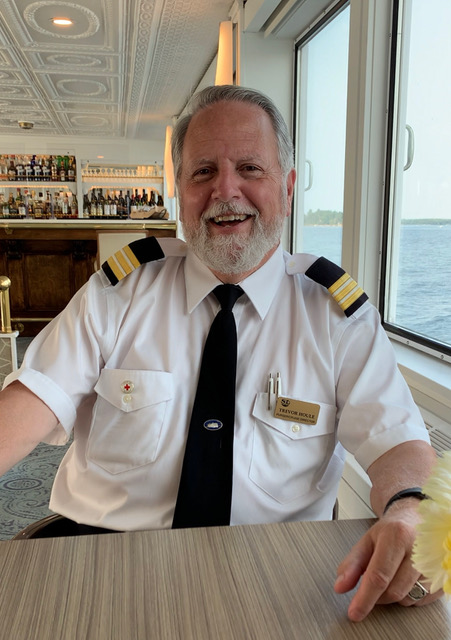
Cheerful Canadian Empress Cruise Director & Purser Trevor Houle. * Photo: Judi Cohen
Then there is the word “soul,” which when not used as an adjective to describe a special kind of food, very specifically refers to everyone aboard a ship, the passengers, crew, even stowaways, if one is present. Hence, we can say in one word that 2,206 souls were aboard the Titanic’s maiden voyage rather than passengers, officers, crew and Jack Dawson.
When Maritime Vocabulary Dominated
The once-powerful steamship industry that gave me my first year-round paying job had the clout to develop a separate and highly specific vocabulary, quite distinct from land-based terms. And, I am sure that old Cape Horners (sailors that had sailed around Cape Horn) cringed as their briny sailing ship lingo got smartened up and modernized. The container ship becomes informally by some, a box boat.
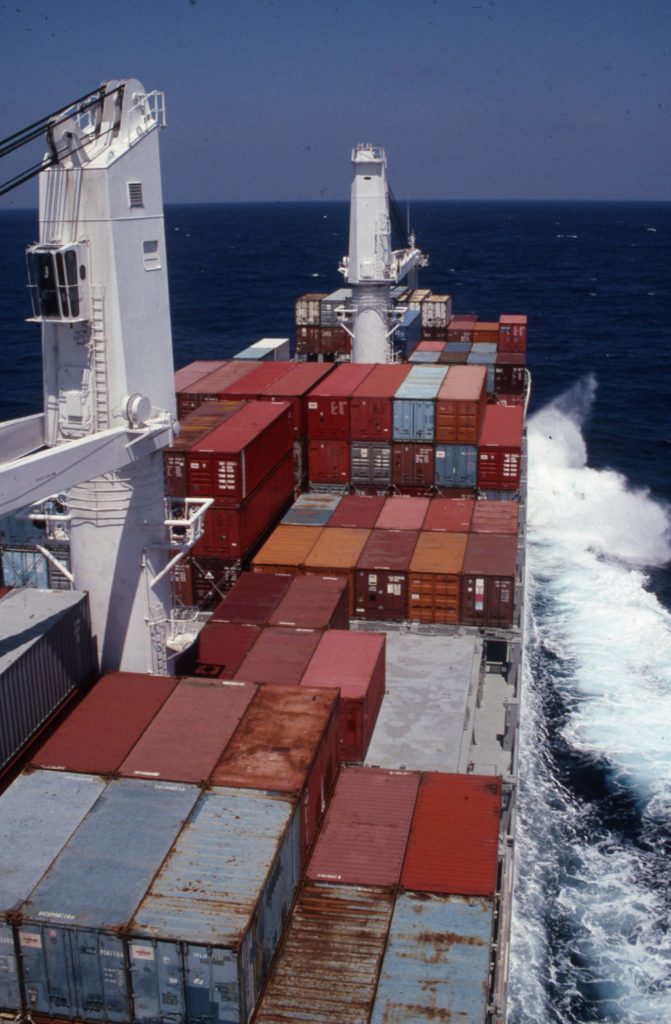
Containers (boxes) aboard the 85-passenger Norwegian cargo-passenger ship Americana en route from South America. * Photo: Ted Scull
Today’s passengers, oops guests, often haven’t a clue about maritime lingo, and why should they, so they talk about going upstairs or downstairs to the next floor, now often named Biscayne or Dolphin Deck instead of going below to C Deck or above to A Deck. Once changing decks would have been by a ladder.
But then one might hear at the end of the end of a cruise that we can now debark via the gangplank. Embarking is a naturally nautical term so why not debarking. Well, look debark up, and one finds it also refers to a now-outlawed surgical procedure for pets.
As for gangplank, the word may call up a vision of a single wooden board (plank) connecting ship and shore, and way back it was just that. However, it does not quite make the grade for the hundreds or even thousands who might be crossing it now. Gangway rings safer.
Ships — Weight & Size
When folks get into the spirit of their cruise, they may get quizzical and trade statistics about how much the boat weighs. Passenger ships are generally rated in gross tons, a volume measurement of enclosed space, and a figure that has “nada” to do with weight. Small ships generally do not use tonnage as the number is so small that it is almost meaningless.
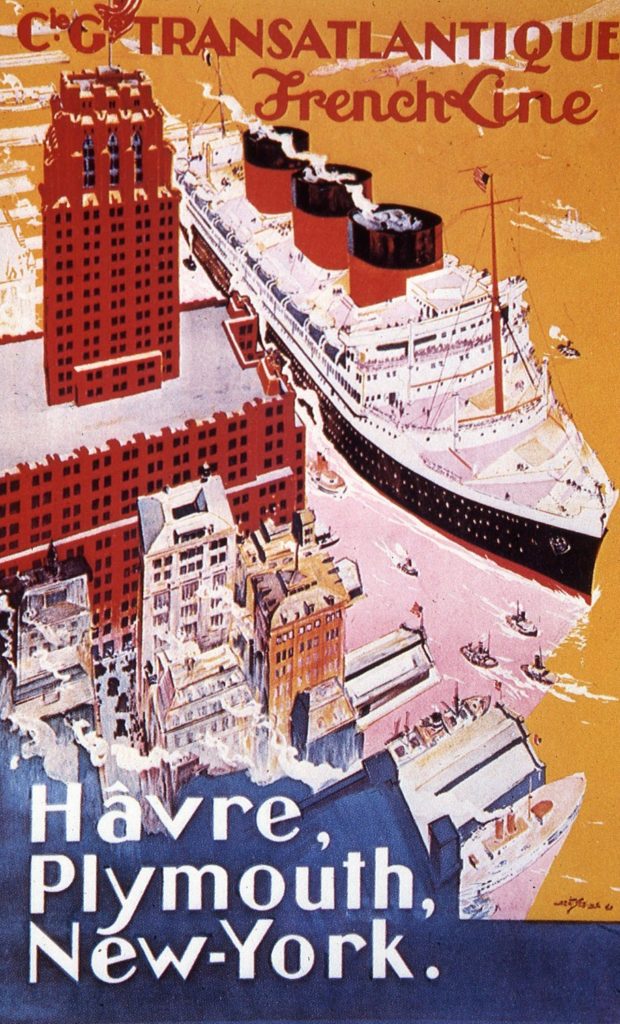
By placing Le Normandie adjacent to the largest building directly on the Manhattan waterfront, its size can be better understood. * Illustration – French poster art.
One hears more about tonnage on the very large cruise ships as it was once and still is, many to a less extent, a boasting term. When the original Queen Mary went into service in 1936, she was measured at 80, 744 gross tons, the then largest ship in the world surpassing the Normandie’s 79,280 grt.
And soon the Queen Mary would be outclassed in size by her sistership Queen Elizabeth at 83,673 tons. It was a horserace between the British, French and Germans. Now, the largest passenger ship is the Wonder of the Seas at 236,857. These figures vary as the ships have an overhaul and when measured, the latest figure may have changed.
When we look at some of the small ships we cover, Uncruise Adventures’ Wilderness Legacy is but 1,492 tons.
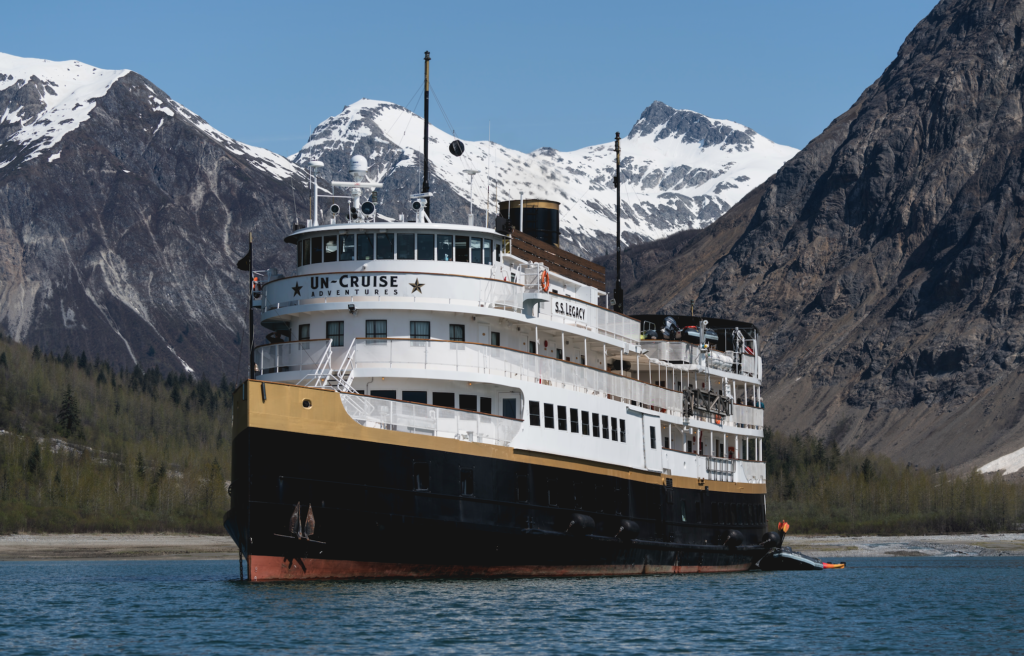
1,492-ton Wilderness Legacy certainly looks majestic in Glacier Bay. * Photo: UnCruise Adventures
Boat Vs Ship, the Ultimate Maritime Vocabulary Debate
Boat vs. ship does not bother me much as it does some, and I think I know why. In my youth, I can recall my parents’ friends asking what boat were we taking to Europe or were we flying?
It was the then-popular use of understatement in a very general way. No one would have specifically referred to the RMS Queen Mary, once the largest and fastest passenger liner, as a boat. But when the Queen Mary landed (please not debarked) her passengers at Southampton’s Ocean Terminal, one then boarded the boat train up to London. I have never heard anyone say ship train except in a sad attempt at a sorry bit of humor.
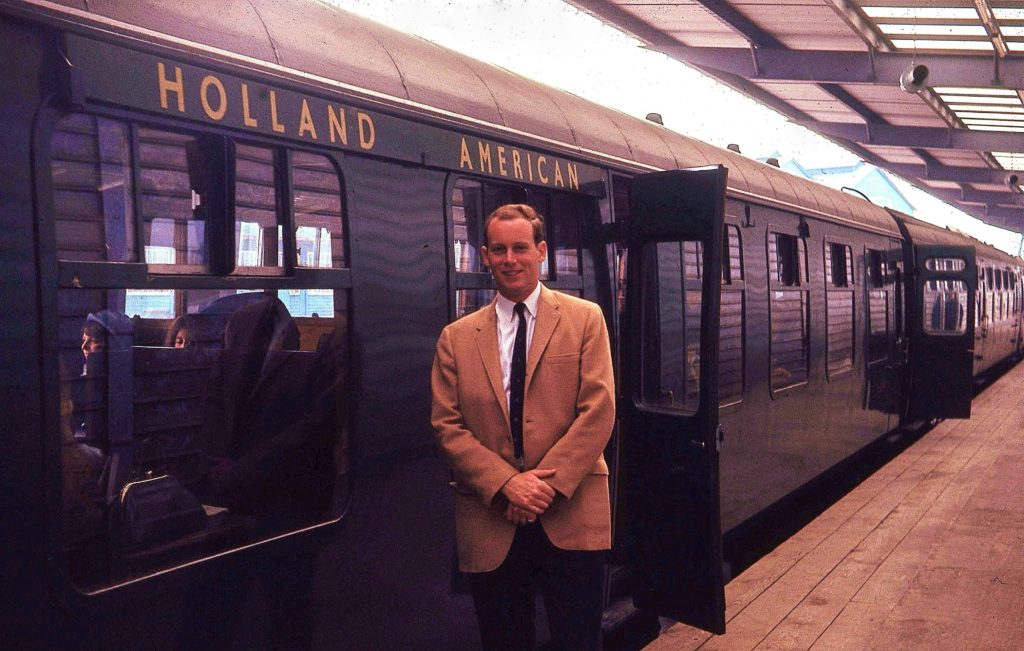
The author stands alongside the boat train from Southampton Docks to London Waterloo at the very beginning of studies for a Master’s Degree.
As an aside, from any direction outside of London — S N E or W — one always travels up to London, even if coming south (down) from Scotland.
The Number of Berths
Most cruise lines use double occupancy figures for the ship’s passenger carrying capacity because most cabins are sold as doubles. Single cabins have nearly disappeared from the high seas apart from a few veteran bottoms, an informal reference to old ships.
Today, some cabins may have a third or fourth upper berth, whereas in the past, a steamship line sold many individual berths in multiple berth cabins, and the ship’s capacity was, therefore, the total berth capacity. By using double occupancy figures, today one can easily exceed 100 percent of the now modern idea of capacity when upper berths are occupied by families or friends sharing a cabin. It reads well for the annual report to boast that the company’s ships sailed at 105 or 110 percent of capacity.
Bottom-liners love this, while the cruising public may wonder if the 5 to 10 percent had no place to rest their head during their cruise.
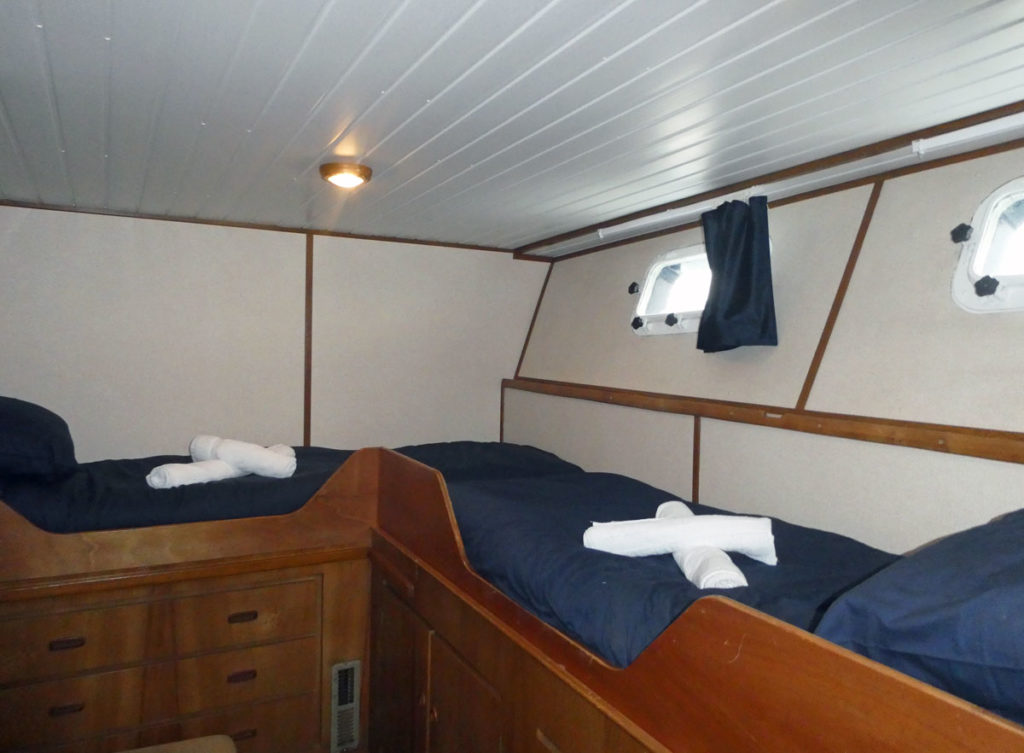
This cabin definitely has two bunks that would be a stretch to call beds.
Now, how scary is this? The Voyager of the Seas double occupancy capacity is 3,114, and during her millennium cruise, she carried 3,537 passengers, therefore operating at 114 percent of capacity. But with her total berth capacity of 3,838, she could actually reach being 123 percent full!
Berths, which even further back were once bunks, are now beds. In double cabins, Holland America Line used to designate them A/P (lower berth A and upper Pullman).
Bookings were handled by the berthing boys, or steamships clerks, using pencils and erasers to record bookings in a large berthing book. They identified the particular sailing, eastbound or westbound, the class, cabin numbers, and berth designations along with payment option dates, and lastly room for specific notations.
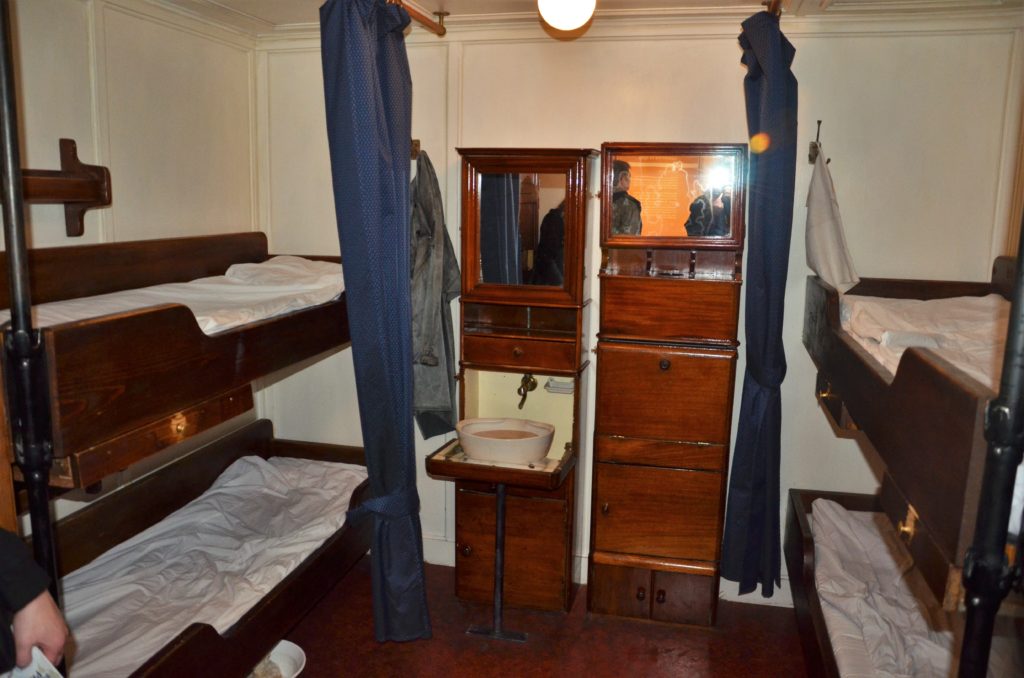
Four-berth cabin sounds more accurate than a four-bedded room. * Photo: Immigration Museum, Hamburg, Germany
QuirkyCruise think smaller is better, and we stick to less than 300 with an occasional one-off vessel it is part of a fleet or was enlarged during a rebuilding. Some of the small numbers of passengers come from the fleets in Scotland that have vessels with single digit capacities.
Cabins Vs Rooms + Promenade Decks
Cabins (on ships of all sizes) are more often now called rooms. And some accommodations with small sitting areas perhaps consisting of two chairs or a couch and a round table set next to the beds have been super-elevated to the highfalutin (a bit exaggerated term from the steamboat days) status of a junior suite or mini-suite.
It is quite removed from a true suite, the term short for a suite of rooms separated by bulkheads now referred to as walls, a door or at least a curtain.
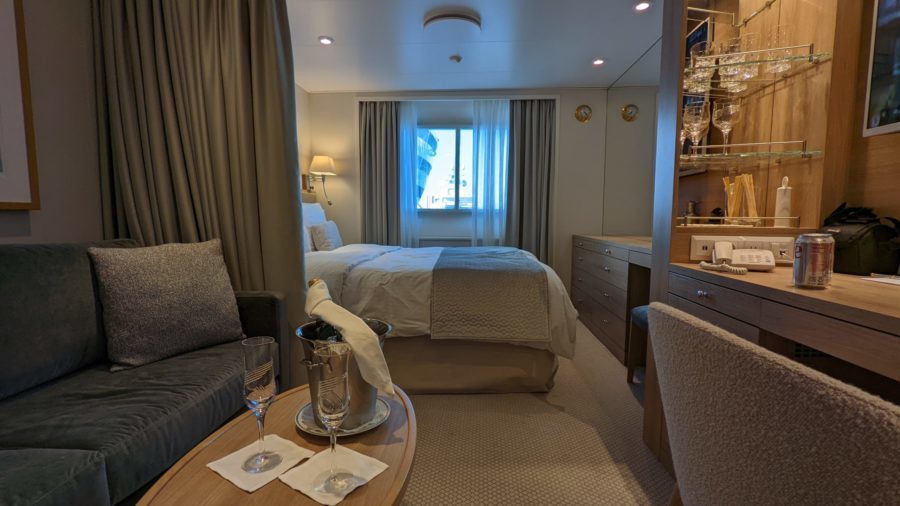
SeaDream stateroom #404; the suite-like cabin can be two spaces by drawing the curtain. * Photo: John Roberts
An outside cabin is often referred to as an ocean-view room, because today’s guests may conjure up a space with no roof or adequate protection from the elements. Most cabins on QuirkyCruise ships are outside and some may be just above the waterline.
Promenade decks, open and enclosed, are now less often part of the ship’s design, as they are often seen as non-revenue-producing space. One major exception in the use of the term promenade is Holland America. But on the present “dam” ships, the Promenade decks are actually what might be called the Boat Deck, because on these and other towering high-sided ships, the lifeboats are often set lower at former promenade deck levels.
Often, today’s so-called Promenade or Boat Deck is devoid of any furniture, even shuffleboard markings, because it is the disembarkation level in an emergency.
Crossings and/or Cruises
Every voyage, if not designated an expedition, has now become a cruise, and while that is the truth in more than 99 percent of the cases, the Queen Elizabeth 2 did and the Queen Mary 2 does still make ocean crossings on a regular basis between Southampton and New York often with no ports of call.
A seasonal movement of a ship from the Mediterranean to the Caribbean is best referred to as a repositioning cruise.
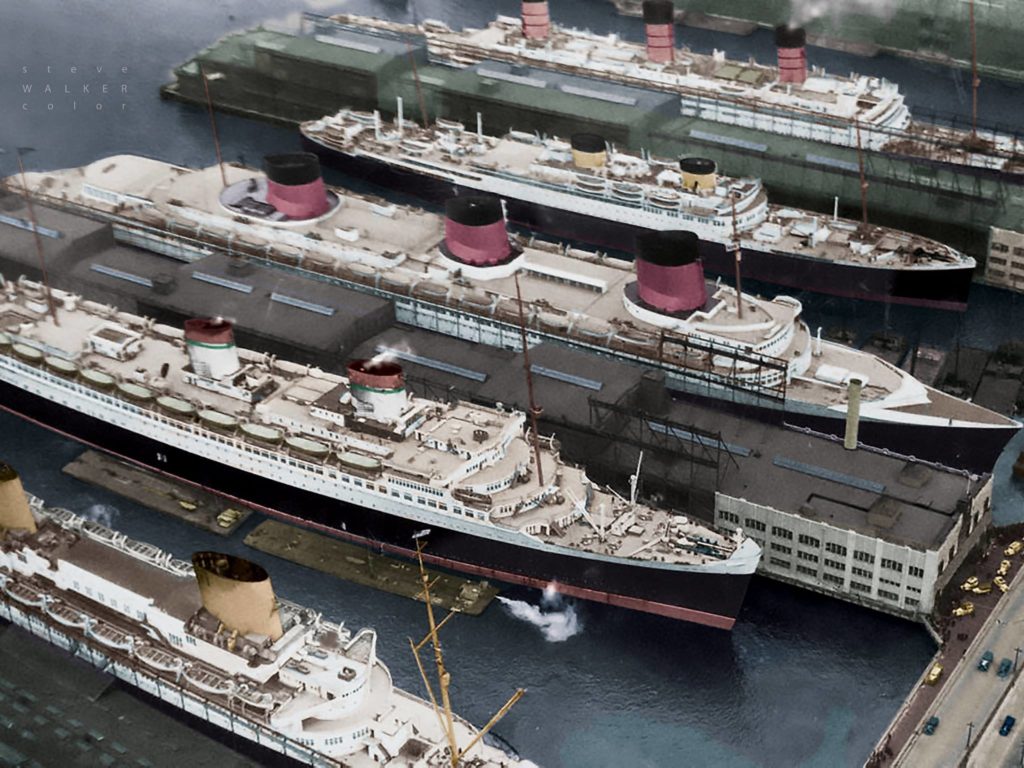
Ocean liners docked at New York’s Hudson River piers prior to crossing the Atlantic to Europe. * Photo: Port of New York Authority
The crossing is generally a direct passage between New York and Southampton, often without intermediate ports of call. In a gray area, a ship sailing from Barcelona and calling at Malaga, Lisbon, and the Azores en route to Port Everglades or New York is making an ocean crossing, but the selling term is generally a transatlantic cruise because of the addition of intermediate cruise ports.
Some lines love to say in their promotional material that their ship’s port of embarkation for a Baltic Capitals cruise is London, when it fact it is nowhere near the capital city, and because of a bridge clearance for large ships to reach London, could never be.
Instead “London” may be 78 miles to the Southeast at Dover on the English Channel, far down the Thames at Tilbury or some 71 miles away on the North Sea at Harwich. But then most cruisers would not recognize Harwich or Tilbury at all, and others may have only the vaguest notation of Dover as the place of white cliffs. Only very occasionally does the long-serving transatlantic port of Southampton become London, some 79 miles away.
Main Lounge Vs Theater
In a ship’s public room nomenclature, the main lounge that was originally a space designed for conversation with furniture arranged around a dance floor, has largely disappeared but the word lounge is still very much in use again by the venerable Holland America such as in the Rotterdam’s Queens Lounge.
But anyone who remembers the Queens Lounge aboard the Rotterdam of 1959, originally the tourist class ballroom, would not recognize the current ship’s Queen Lounge as such, but rather the tiered-seating showroom or more aptly the theater. The theater on HAL ships is where films are shown, or the screening room. Most small ships have just a couple of rooms for sitting and some just one space. Lounge or bar lounge would apply as few have theaters.
The Hotel Department
In the former chief steward’s now hotel department, a restaurant or dining steward is now mostly referred to as a waiter or busboy (regardless of sex) or simply the most sexless and dreariest term of all time — wait staff. Cabin stewards (a term that some use to include females) are often room service staff.
When women were first hired on some British liners, the diminutive term purserettes came into being, while young men were simply assistant pursers. Happily, purserettes have gone the way of bobby socks.
The word crew now often becomes staff, yet most keep the term crew for the deck or navigating departments, and happily, the hotel staff has not thus far become catering staff, though I am not holding my breath on this one. One important position has evolved into the Food and Beverage Manager, another landlubber/hotel term.
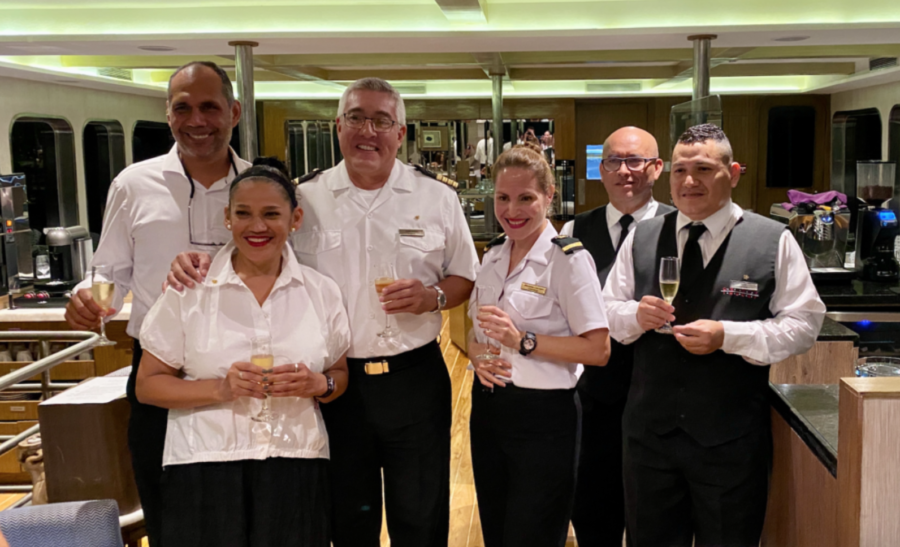
The crew here include a one and a four-striper (officers) and catering staff. * Photo: John Roberts.
One does not hear much about the radio officer or the even older informal “sparks” anymore, as most ships don’t even have a radio room. Instead, communications come as e-mails directly to the bridge or to the individual department heads.
The Almighty Cruise Director
The cruise director has been around almost as long as there have been cruises, and there never was a crossing director. Now, however, a cruise director’s job has become much more important as he or she often manages a large paid entertainment staff.
When the mighty Transatlantic Steamship Conference held sway over passage rates and rules, the only paid entertainers were the ship’s resident house band, and singers, dancers, comedians, magicians and the like were simply passengers who sang for their supper (yes, guests of the line who got free passage as their reward for performing).
I play that role twice a year when I serve as an unpaid lecturer aboard the Queen Mary 2 with a free passage. I love the job.
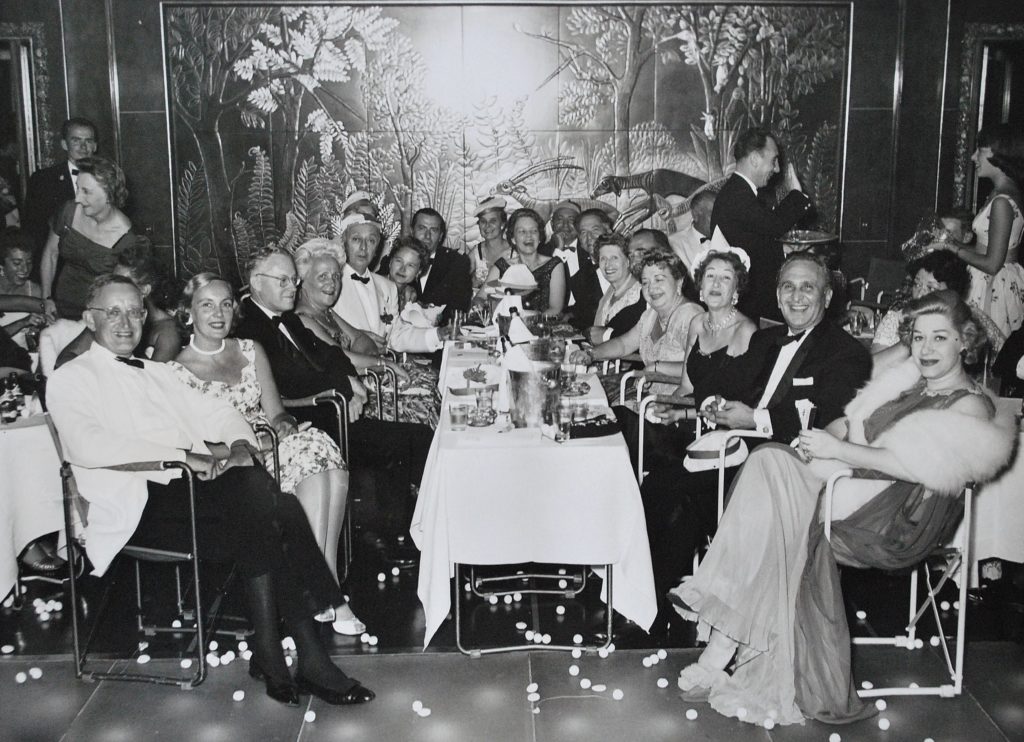
The woman on the far right is Regina Resnik, professional opera singer at New York’s Metropolitan Opera. * Photo: French Line photo
Small ships may the role of cruise director and if making an expedition-style voyage, an expedition leader that organizes the naturalists.
Holland America & Me
It probably will come as no surprise that I hark back to the ocean liner era, and my first paying job was in the steamship business. My employer, Holland America Line, operated cruises but was not then primarily in the cruise business and therefore, was still not designated a cruise line.
Cruises were simply a way to employ some of the ships during the off-season, mostly Christmas through March, when passengers deigned to cross the storm-tossed “pond” (Atlantic) unless they had to. But then, with jet travel, that rapidly shifted to cruises and a crossing became a rarity or even non-existent.
During my tenure at HAL, my two weeks of vacation did not allow sufficient time to cross to Europe and back, and I had no interest in taking a West Indies, now read Caribbean, cruise. How times have changed, and even Holland America Line became Holland America Cruises for a bit during a low period in its fortunes, but happily the company simply became Holland America, a designation known well enough not to add “Line or Cruises.”
Keeping Maritime Vocabulary Alive for the Ages
Some of us valiantly resist the dilution of our maritime vocabulary and specifically here, prefer to use terms and words specifically designed for ocean shipping.
This passenger when sailing between Southampton and New York will continue to use traditional maritime vocabulary until he has made his last crossing, as long as there is one.
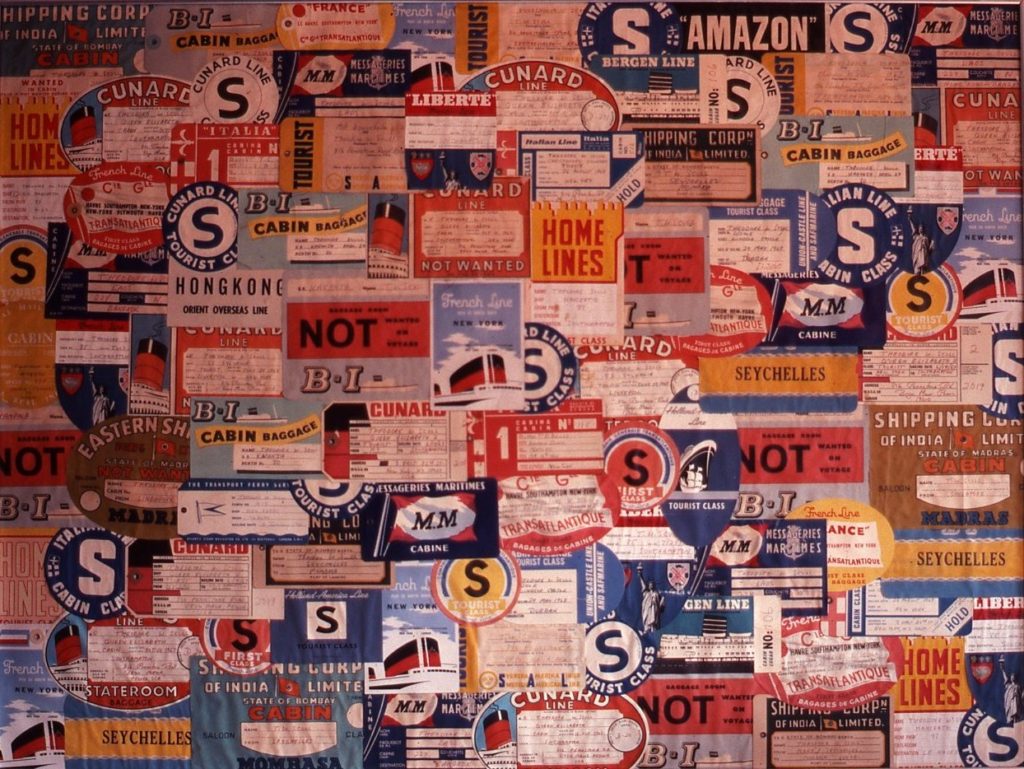
Baggage tags contained names, class, and the first letter of one’s last name. * Image: Ted Scull
Don’t miss a post about small-ship cruising, subscribe to QuirkyCruise.com for monthly updates & special offers!
© This article is protected by copyright, no part may be reproduced by any process without written permission from the author. All Rights Reserved. QuirkyCruise.com.

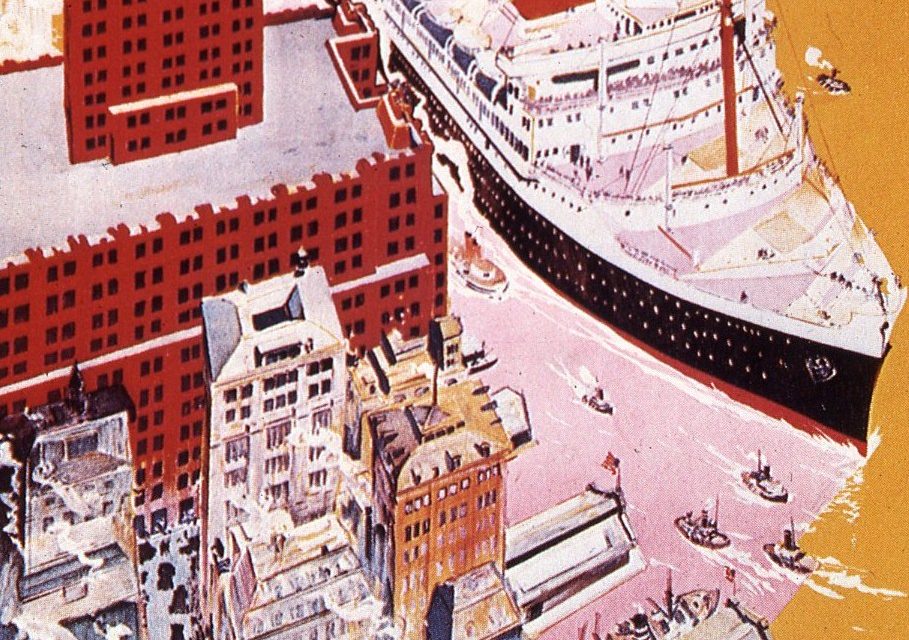


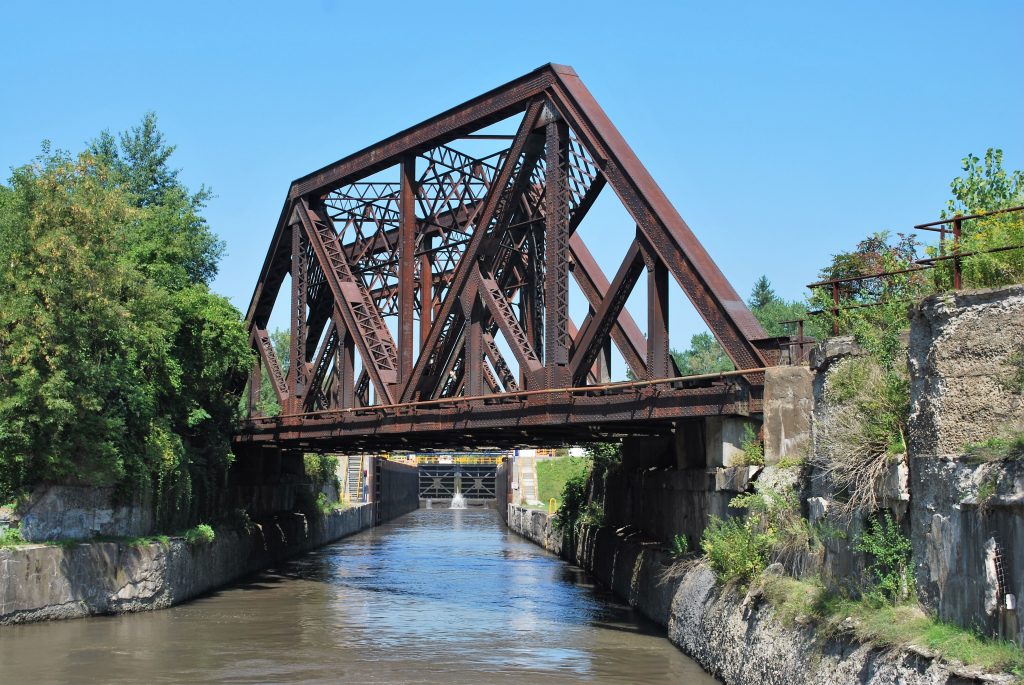
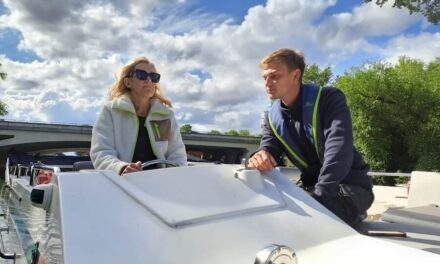

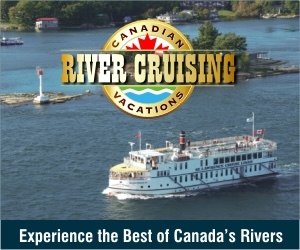

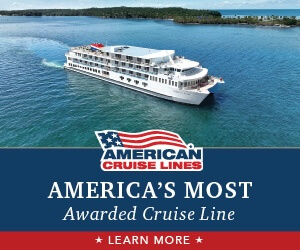




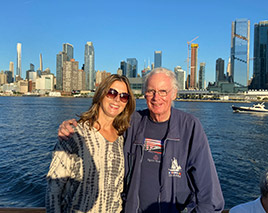 HEIDI SARNA
HEIDI SARNA

